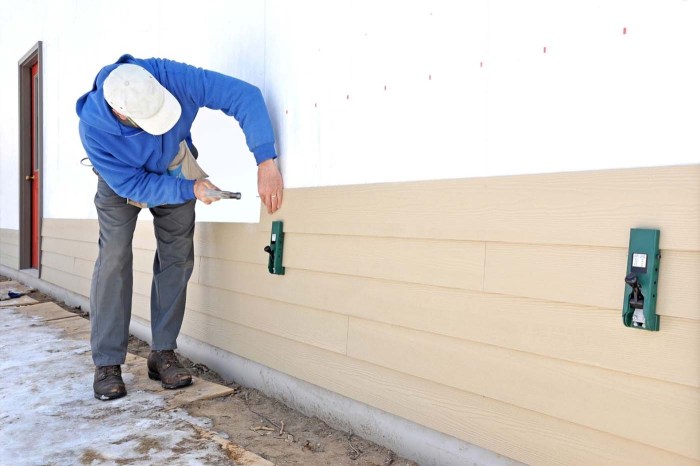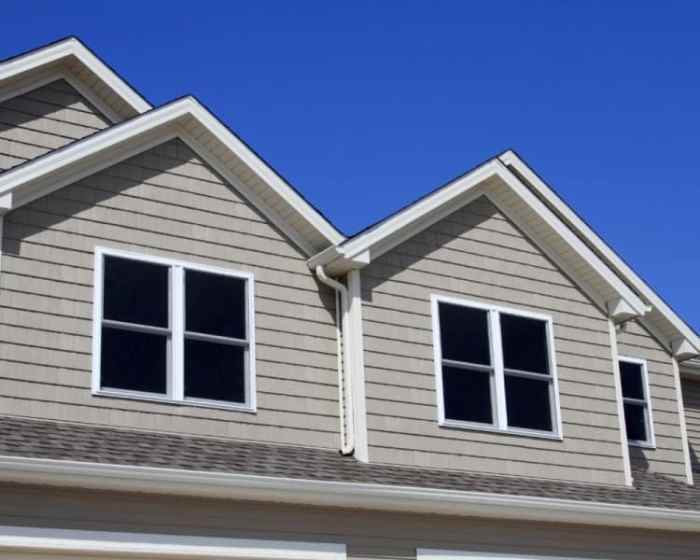The Ultimate Guide to Siding Installers Seattle
Embark on a journey into the world of siding installers in Seattle as we explore the importance of professional installation, different siding materials, finding reliable installers, and the installation process. Discover valuable insights and tips that will enhance your understanding of this crucial aspect of property maintenance.
Importance of Siding Installation
When it comes to maintaining and enhancing the overall look and functionality of your home, siding installation plays a crucial role. Here are some key reasons why hiring professional siding installers is essential:
Impact on Property Value and Curb Appeal
Quality siding installation can significantly increase the value of your property and boost its curb appeal. It not only improves the aesthetic appeal of your home but also enhances its overall market value.
Improvement in Energy Efficiency
Properly installed siding can help improve the energy efficiency of your home by providing better insulation. This can lead to reduced energy costs and a more comfortable living environment throughout the year.
Types of Siding Materials

When it comes to siding materials, there are several popular options used in Seattle. Each material has its own unique characteristics, durability, and maintenance requirements. Let's take a closer look at some of the common siding materials found in Seattle and their suitability for the local climate.
Vinyl Siding
- Vinyl siding is one of the most popular choices due to its affordability and low maintenance requirements.
- This material is durable and can withstand the rainy and humid conditions in Seattle.
- However, extreme temperatures can cause vinyl siding to warp or crack over time.
Fiber Cement Siding
- Fiber cement siding is known for its durability and resistance to moisture, making it a great option for Seattle's climate.
- It is low maintenance and can mimic the look of wood or stucco.
- However, fiber cement siding can be more expensive than other materials.
Cedar Siding
- Cedar siding is a popular choice for its natural beauty and longevity.
- It is resistant to rot and insects, but it does require regular maintenance to prevent weathering.
- Seattle's damp climate can lead to mold and mildew growth on cedar siding if not properly maintained.
Metal Siding
- Metal siding is a durable and low-maintenance option that can withstand Seattle's wet climate.
- It is resistant to rot, insects, and fire, making it a long-lasting choice for homeowners.
- However, metal siding can dent easily and may require repainting over time to maintain its appearance.
Finding Reliable Siding Installers

When it comes to finding reliable siding installers in Seattle, it is essential to do your research and vet potential companies to ensure you hire the best professionals for the job.
Research and Vet Siding Installation Companies
- Check for recommendations from friends, family, or neighbors who have had siding installed recently.
- Read online reviews and ratings on trusted websites to get an idea of the company's reputation.
- Verify the company's credentials, including licenses, insurance, and certifications to guarantee they meet industry standards.
Checking for Licenses, Insurance, and Certifications
- Make sure the siding installation company is licensed to operate in Seattle and has the necessary permits for the job.
- Ensure the company has liability insurance and workers' compensation coverage to protect you from any accidents or damages during the project.
- Look for certifications from reputable organizations that show the company's commitment to quality workmanship and professionalism.
Obtaining Quotes and Estimates
- Reach out to multiple siding installers to request quotes and estimates for your project.
- Get detailed proposals outlining the scope of work, materials to be used, and project timeline.
- Compare the quotes carefully, considering not only the cost but also the company's reputation, experience, and warranty options.
Siding Installation Process
When it comes to siding installation, there are several key steps involved to ensure a successful project. From preparation to finishing touches, each phase requires attention to detail and expertise. Let's dive into the typical process of siding installation.
Preparation and Planning
Before any siding installation can begin, thorough preparation and planning are essential. This includes assessing the existing structure, taking measurements, and selecting the appropriate siding materials based on the client's preferences and budget.
- Assess the existing structure to identify any repairs or modifications needed before installation.
- Take accurate measurements of the area to determine the amount of siding material required.
- Consult with the client to choose the best siding material that suits their aesthetic preferences and budget.
Installation Process
Once the preparation is complete, the actual installation process can begin. Siding installers use a variety of tools and equipment to efficiently install the siding according to the manufacturer's guidelines and industry standards.
- Tools and equipment commonly used by siding installers include nail guns, levels, saws, tape measures, and ladders.
- Installers follow the manufacturer's instructions to properly cut, fit, and secure the siding panels in place.
- Proper insulation and weatherproofing techniques are employed to ensure the siding is durable and energy-efficient.
Challenges and Solutions
During the siding installation process, professionals may encounter various challenges that require quick thinking and problem-solving skills. It's important for installers to be prepared to address these issues promptly to ensure a smooth and successful installation.
- Common challenges include inclement weather, uneven surfaces, and unexpected structural issues.
- Professionals overcome these challenges by rescheduling work during favorable weather conditions, using leveling techniques to address uneven surfaces, and collaborating with other trades to resolve structural issues.
- Regular inspections and quality checks are conducted throughout the installation to identify and address any potential issues before they escalate.
Concluding Remarks
In conclusion, siding installers in Seattle play a vital role in enhancing property value, energy efficiency, and curb appeal. By understanding the importance of hiring professionals, types of siding materials, and the installation process, you are equipped to make informed decisions for your property needs.
Question Bank
What are the benefits of hiring professional siding installers?
Professional installers ensure high-quality work, enhancing property value and curb appeal. They also improve energy efficiency through proper installation techniques.
How can I find reliable siding installers in Seattle?
Research and vet companies, check for licenses, insurance, and certifications. Obtain quotes and estimates for your project to make an informed decision.
What are some popular siding materials used in Seattle?
Popular siding materials in Seattle include vinyl, fiber cement, wood, and metal. Each material has different durability and maintenance requirements suitable for varying climates.
What tools and equipment do siding installers use during installation?
Siding installers use tools such as nail guns, saws, levels, and ladders. Equipment like scaffolding and safety gear are also essential for a safe and efficient installation process.
What are the common challenges faced during siding installation?
Challenges may include weather conditions, structural issues, and material compatibility. Professional installers have the expertise to overcome these challenges effectively.




